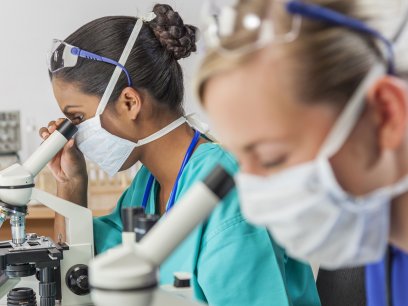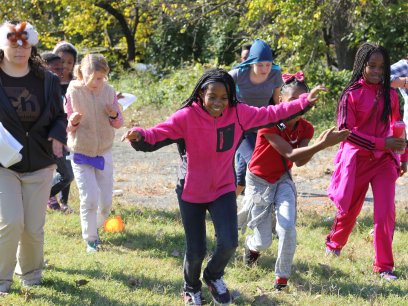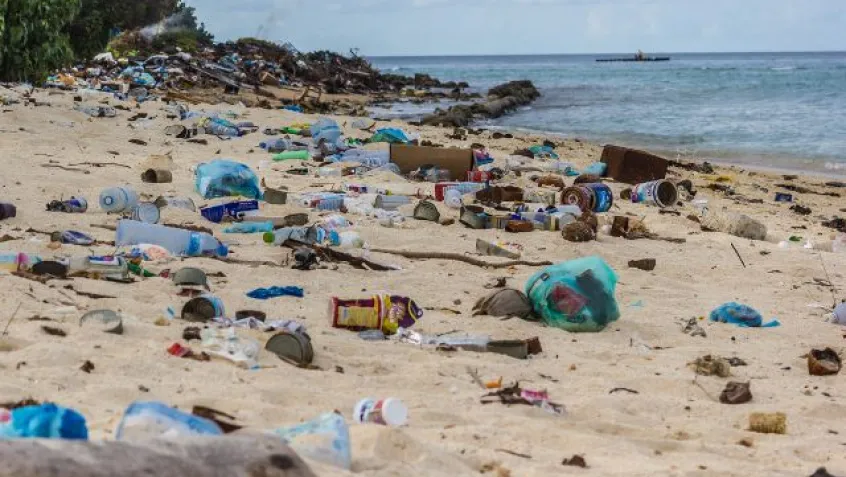
June 8 is World Oceans Day, a global call to action to protect the biodiversity and ecosystems that lie beneath the surface of our blue planet. Given its size—scientists estimate it holds over 1.3 billion cubic km of water—the ocean may seem like a wild, pristine place. But human actions are impacting even the most remote corners of the ocean.
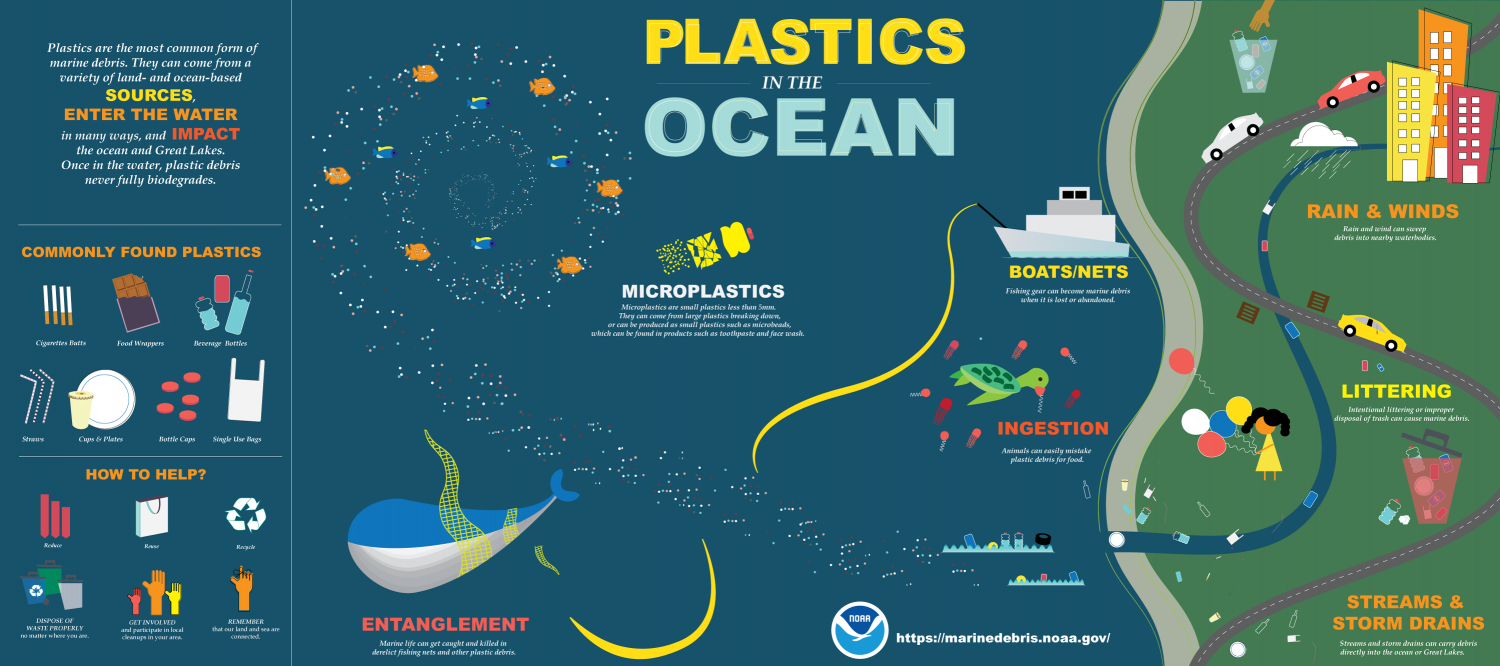
Marine debris is man-made trash that is intentionally or unintentionally disposed of or abandoned in the ocean. Marine debris can hurt or kill marine life if they ingest or become tangled in it. This pollution also interferes with ship navigation by clogging engines and propellers. It also poses a threat to human health.
Most marine debris consists of plastics. When plastics end up in the ocean, they never really go away—they simply continue to break down into smaller and smaller pieces due to sunlight, crashing waves, and other environmental factors. Eventually, this plastic can form a “garbage patch” at the convergence of a spinning current called a gyre that pulls floating trash in and traps it.
While the name might conjure up an image of an island, garbage patches do not have any solid ground that you can stand on. Instead, they are made of millions of pieces of microplastics moving in a soupy swirl. There are five gyres in total across the world’s oceans, and garbage patches of different sizes are located in each one.
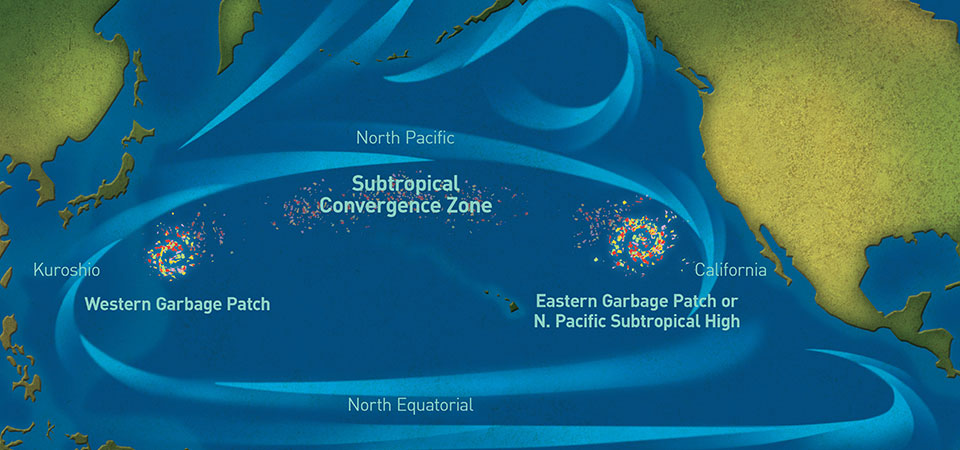
The amount of plastic in the ocean has rapidly increased since 2005. Today, scientists estimate anywhere from 82 to 358 trillion plastic particles weighing 1.2 to 5.4 million tons are currently floating in the ocean. Plastic can travel across the entire Pacific Ocean before settling in a garbage patch.
Plastic Alters Ocean Ecosystems
The Great Pacific Garbage Patch is the largest—and most infamous—accumulation of plastic in the ocean. Located between Hawaii and California, it is twice the size of Texas.
Because of its remote location, the Great Pacific Garbage Patch is challenging to study. However, scientists have recently made some surprising new discoveries about how it is impacting ocean ecosystems and biodiversity.
Researchers collected samples of plastic debris that had been floating in the ocean for many years. They discovered that coastal invertebrate species like mussels and anemones were often found on the debris, despite being hundreds of miles from any coast.
In fact, coastal animals were found living side-by-side with open ocean species on two-thirds of the plastic objects that the scientists analyzed. Each small piece of plastic had essentially become its own ecosystem. Coastal species are surviving, reproducing, and building complex community structures in the open ocean.
While it is exciting to see how nature can adapt to man-made challenges, this discovery also has big implications. Garbage patches are fundamentally altering ocean ecosystems by providing a way for species to travel to new geographic regions. Using these tiny plastic “islands,” non-native species like barnacles or crabs could be transported across the ocean and become invasive in new environments, crowding out or competing with native species.
How You Can Prevent Plastic from Reaching the Ocean
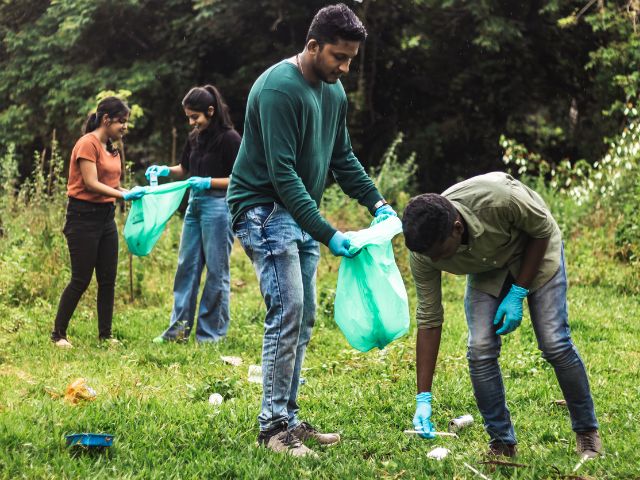
While the problem of marine debris is a big one, it is not hopeless.
An ambitious project called The Ocean Cleanup is using huge U-shaped net systems that move with the current to collect and remove plastics from the water. The initiative plans to launch 60 of these net systems to reduce the amount of plastic in the ocean by at least 90% by 2040, starting with the Great Pacific Garbage Patch.
Prevention will be the key to solving the long-term marine debris problem. Plastics enter our waterways and oceans in several different ways, such as improper waste management, littering, and stormwater debris. Because much of the plastic in the ocean is discarded fishing line and nets, the fishing industry will also play an important role in reducing plastic pollution.
There is no one-size-fits all solution to reducing marine debris, but everyone can do their part. Here are a few ways that you can get involved to cut down on the amount of plastic in the ocean:
- Participate in a community cleanup. Pick up the trash on your streets, rivers, and beaches before it becomes marine debris. Learn how to host a clean up of your own!
- Collect marine debris data. Knowing more about the different types and amounts of debris on a beach, street, or in a stream is the first step to preventing it. Document the debris you collect during a community cleanup by logging it using the Debris Tracker app so scientists around the world can use the information in their research.
- Reduce the amount of food packaging waste you create. Food wrappers are commonly collected during beach or river clean ups. Switch to reusable shopping bags, cups, and utensils and avoid individually or heavily packaged foods.
Classroom Resources That Teach Kids About Plastics and the Ocean
Use these free classroom resources to help kids understand the challenge of marine debris and how they can help.
- Trash Talk: What Is The Great Pacific Garbage Patch? This two-minute video by the National Oceanic and Atmospheric Administration (NOAA) for elementary school students provides an overview of ocean garbage patches and the impacts of marine debris.
- Be An Ocean Guardian: An activity book created by NOAA for grades K-3 that teaches students about the ocean, marine debris, and why conservation is important through word searches, games, and coloring pages.
- An Educator’s Guide to Marine Debris: The North American Marine Environment Protection Association partnered with NOAA to produce this curriculum for grades K-12 with a focus on STEM objectives that can be used as a stand-alone teaching tool or as supplemental lessons.
- Ocean Plastic Pollution Online Course: Grades 3-12 can dig deeper into plastic pollution issues and solutions with this self-paced online course from the Monterey Bay Aquarium.
- Plastics, Plastics Everywhere: Students in grades 6-8 take what they learn from a variety of National Geographic multimedia resources to create their own model explaining how plastics impact the environment.
